
JoJo's Bizarre Adventure is a Japanese manga series written and illustrated by Hirohiko Araki. It was originally serialized in Shueisha's shōnen manga magazine Weekly Shōnen Jump from 1987 to 2004, and was transferred to the monthly seinen manga magazine Ultra Jump in 2005. The series is divided into a total of nine story arcs, each following a new protagonist bearing the "JoJo" nickname. JoJo's Bizarre Adventure is the largest ongoing manga series published by Shueisha by number of volumes, with its chapters collected in 133 tankōbon volumes as of December 2023.

Marmalade Boy is a Japanese manga series written and illustrated by Wataru Yoshizumi. It was published in Shueisha's shōjo manga magazine Ribon from May 1992 to October 1995 and collected in eight tankōbon volumes. The series was adapted by Toei Animation as a 76-episode anime television series which aired on TV Asahi in 1994 to 1995. This was followed by a prequel theatrical anime movie in 1995. The series was also adapted as a 30-episode live-action television series that was broadcast in Taiwan in 2002. A live-action film adaptation was released in Japan by Warner Bros. Pictures on April 27, 2018.

Hana-Kimi: For You in Full Blossom, is a shōjo manga series written by Hisaya Nakajo. The manga was serialized in Japan in Hakusensha's semi-monthly shōjo manga magazine, Hana to Yume. The series was concluded with the Japanese release of volume 23 in August 2004.

Death Note is a Japanese manga series written by Tsugumi Ohba and illustrated by Takeshi Obata. It was serialized in Shueisha's shōnen manga magazineWeekly Shōnen Jump from December 2003 to May 2006, with its chapters collected in 12 tankōbon volumes. The story follows Light Yagami, a genius high school student who discovers a mysterious notebook: the "Death Note", which belonged to the shinigami Ryuk, and grants the user the supernatural ability to kill anyone whose name is written in its pages. The series centers around Light's subsequent attempts to use the Death Note to carry out a worldwide massacre of individuals whom he deems immoral and to create a crime-free society, using the alias of a god-like vigilante named "Kira", and the subsequent efforts of an elite Japanese police task force, led by enigmatic detective L, to apprehend him.
VIZ Media, LLC is an American entertainment company headquartered in San Francisco, California, focused on publishing manga, and distribution and licensing Japanese anime, films, and television series. It was founded in 1986 as VIZ, LLC. In 2005, VIZ, LLC and ShoPro Entertainment merged to form the current VIZ Media, LLC, which is owned by Japanese publishing conglomerates Shueisha and Shogakukan, as well as Japanese production company Shogakukan-Shueisha Productions (ShoPro). In 2017, Viz Media was the largest publisher of graphic novels in the United States in the bookstore market, with a 23% share of the market.
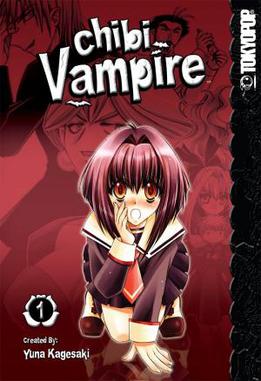
Chibi Vampire, originally released in Japan as Karin, is a Japanese manga series written and illustrated by Yuna Kagesaki. The story is about an unusual vampiress girl, who instead of drinking blood must inject it into others because she produces too much. Chibi Vampire first premiered in the shōnen magazine Monthly Dragon Age in the October 2003 issue, and ran until February 2008. The individual chapters were published by Kadokawa Shoten into fourteen collected volumes. Later an anime series for "Chibi Vampire" was also produced in 2005. This anime series has a somewhat similar but different story and ending.

King of Thorn is a Japanese fantastique manga series written and illustrated by Yuji Iwahara. It was published by Enterbrain in the seinen magazine Monthly Comic Beam between October 2002 and October 2005 and collected in six bound volumes. It is licensed in North America by Tokyopop, with the final volume published in November 2008. The series is about a group of people who are put in suspended animation to escape a mysterious plague that turns people to stone, and upon waking there appears to be only seven survivors in a world run wild—including a Japanese teenage girl named Kasumi Ishiki and a British man named Marco Owen. The survivors soon discover that the entire ruin is filled with strange, dinosaur-like creatures and other monstrous aberrations of nature. Thinking that a great amount of time passed since their arrival on the island, soon the survivors discover not only that their sleep was indeed too short to label such dramatic changes as natural occurrence, but also that the situation in and of itself is far greater than they could imagine.

Trinity Blood is a series of Japanese light novels written by Sunao Yoshida with illustrations by Thores Shibamoto and originally serialized in The Sneaker. Set 900 years after an apocalyptic war between humans and vampires, the series focuses on the ongoing cold war between the Vatican, the human government, and the "New Human Empire", the government of the vampiric Methuselah. Fighting on the Vatican's side is Abel Nightroad, a Crusnik—a vampire that feeds on vampires. The novels blend science fiction, fantasy, and political intrigue, with some in the Vatican and the Empire striving for peace, and the Rosen Kreuz Order doing anything in its power to stop it.

Venus Versus Virus is a Japanese manga series created by Atsushi Suzumi which was first serialized on June 27, 2005 in MediaWorks' shōnen manga magazine Dengeki Comic Gao!. The manga ended serialization in Dengeki Comic Gao! on February 27, 2008 due to the magazine's discontinuation, but the manga continued serialization in ASCII Media Works' manga magazine Dengeki Daioh between March 21 and July 26, 2008. Eight bound volumes have been released by ASCII Media Works in Japan. The manga has been licensed for English language distribution by North American–based company Seven Seas Entertainment; the first volume was released in July 2007. Later, a drama CD was created based on the manga series in October 2006. The series has since been adapted into an anime produced by Studio Hibari that aired in Japan between January and March 2007 on BS-i, consisting of twelve episodes.
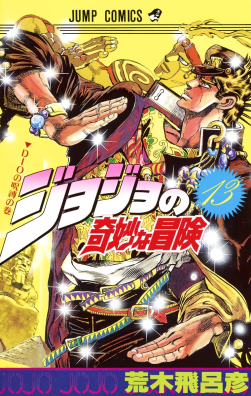
Stardust Crusaders is the third story arc of the manga series JoJo's Bizarre Adventure written and illustrated by Hirohiko Araki. The arc was serialized for a little over 3 years. It was serialized in Shueisha's Weekly Shōnen Jump from April 3, 1989, to April 27, 1992, for 152 chapters, which were later collected into 16 tankōbon volumes. In its original publication, it was known as JoJo's Bizarre Adventure Part 3 Jotaro Kujo: Heritage for the Future. The arc was preceded by Battle Tendency and followed by Diamond Is Unbreakable.

L Lawliet, known mononymously as L, is a fictional character and the main antagonist in the manga series Death Note, created by Tsugumi Ohba and Takeshi Obata. He is an enigmatic, mysterious, and highly-esteemed international consulting detective whose true identity and background is kept a secret. He communicates with law enforcement agencies only through his equally inexplicable handler/assistant, Watari, who serves as his official liaison with the authorities. Though his past is shrouded in mystery, he has gained a reputation as arguably the world's greatest detective/criminal profiler.

Death Note is a 2006 Japanese supernatural thriller film based on the manga series of the same title by Tsugumi Ohba and Takeshi Obata. The film primarily center on a Tokyo college student who attempts to change the world into a utopian society without crime, by committing a world-wide massacre of criminals and people whom he deems morally unworthy of life, through a supernatural notebook that kills anyone whose name is written in the pages, while being hunted down by an elite task-force of law enforcement officers within Tokyo, led by an enigmatic international detective. The film was directed by Shusuke Kaneko, produced by Nippon Television, and distributed by Warner Bros. Pictures Japan. The film was licensed by VIZ Pictures, Warner Bros.
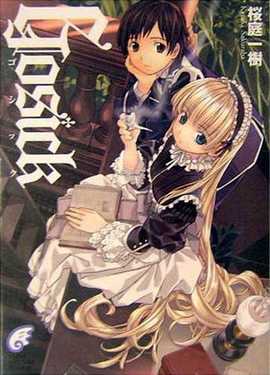
Gosick is a Japanese light novel series written by Kazuki Sakuraba, with illustrations by Hinata Takeda. The series includes 13 novels published by Fujimi Shobo between December 2003 and July 2011. Set in a fictional European country in 1924, a Japanese exchange student meets a mysterious, brilliant girl who only leaves the library to sleep. Her brother, a detective, relies on her exceptional mind to solve difficult mysteries. Tokyopop released the first two novels in English in North America. A manga adaptation drawn by Sakuya Amano was serialized in Fujimi Shobo's Monthly Dragon Age magazine. A 24-episode anime adaptation by Bones aired between January and July 2011. A collection of side stories titled GosickS was published between 2005 and 2011, while a sequel novel series named Gosick New Continent was released in between 2013 and 2016.

Rosario + Vampire is a Japanese manga series written and illustrated by Akihisa Ikeda. The story revolves around Tsukune Aono, a boy who inadvertently enrolls in a boarding school for monsters. He quickly befriends Moka Akashiya, a vampire who soon develops an obsession with his blood, and later meets other monster girls who soon take a romantic liking to him. The manga was serialized in Shueisha's shōnen manga magazine Monthly Shonen Jump from April 2004 to June 2007, when the magazine ceased its publication. An extra chapter was published in Weekly Shōnen Jump in September 2007. The chapters were collected in ten tankōbon volumes.

Monochrome Factor is a Japanese manga series written and illustrated by Kaili Sorano. It was first serialized in Mag Garden's bi-monthly manga magazine Comic Blade Masamune in May 2004. However, when the magazine ceased publication, the manga began serialization in the new and revamped magazine, Comic Blade Avarus, in September 2007.
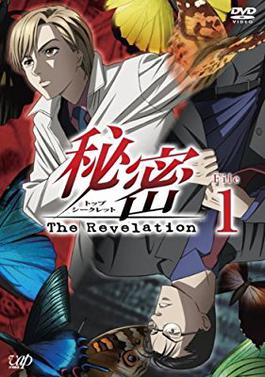
Himitsu – Top Secret is a Japanese manga series written and illustrated by Reiko Shimizu. It has been serialized in Melody.
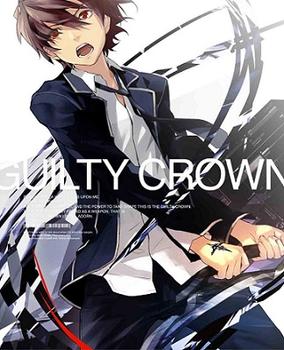
Guilty Crown is a 2011 Japanese anime television series produced by Production I.G which aired on Fuji TV's noitamina program block from October 13, 2011. The story revolves around Shu Ouma, a high school boy who comes into possession of an ability called the "Power of the King" allowing him to draw out items called "Voids" from other people. He is then thrown into the conflict between a quasi-governmental organization known as GHQ and a rebel organization called Funeral Parlor which aims to restore Japan's independence from the GHQ. In the process, Shu has to deal with the burden his ability puts on his shoulders and the horrific mystery of his past.

Jinsei, subtitled La Bonne Vie, is a Japanese light novel series written by Ougyo Kawagishi and illustrated by Meruchi Nanase. Ten volumes were published by Shogakukan from January 2012 to March 2015 under their Gagaga Bunko imprint. A manga adaptation was serialized in Shogakukan's Monthly Sunday Gene-X magazine from February 2014 to March 2015, and was collected into three tankōbon volumes. An anime television series adaptation by Feel aired from July to September 2014 under the title Life Counselling TV Animation "Jinsei". Funimation licensed the series under the English title Jinsei - Life Consulting.

Black Butler is a 2014 Japanese period-style action fantasy film directed by Kentarō Ōtani and Keiichi Satō. The film is based on the manga of the same name by Yana Toboso.


















